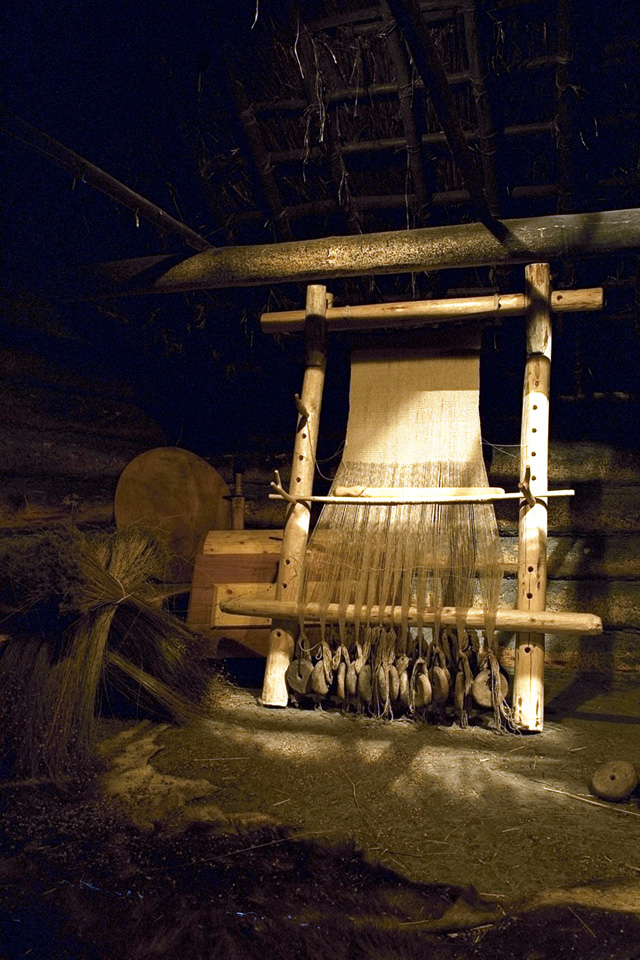 STUDIO PHOTOGRAPHS
STUDIO PHOTOGRAPHSIntroduction | Research | People | Tools
 STUDIO PHOTOGRAPHS
STUDIO PHOTOGRAPHS
UPRIGHT LOOM WITH WARP WEIGHTS (ML s.n.)
Type: Reconstruction of an upright loom.
Use: Weaving of fabric (presentation).
Period: Modern Age.
Dating: 1998 AD
Photographer: Lily Díaz.
Upright loom with warp weights is considered to be the oldest loom type in Europe. Oldest proofs of it are known in Hungary from ca. 5000 B.C. Upright loom has been preserved in use until the 1960s in western Norway, Lapland, the Færøe Islands and Iceland. The vertical loom stood upright, leaning upon wall or roof beam. In the ends of the warp yarns, weights are tied in order to tighten the warp. The fabric is woven downwards and the weft is striken tight with a so-called weaving sword.
The oldest textile finds in Finland go back to the Iron Age (ca. 500 B.C. - 1150/1300 A.D.) although the art of weaving can be traced back to the Stone and Bronze Age. Most ancient textiles preserved in Finland are found in inhumations in which the corrosive products of the bronze jewels have preserved textiles near them. From these kind of finds it can be judged that in the Iron-Age Finland, people could weave skilfully even complex fabrics, like tabby and different kinds of twills, using tablet loom ribbon or card weaving fronts and endings, tube selvages, fringed edges and complex bronze-spiral ornaments which in the Baltic Sea area were used only by the Finno-Ugrians.
In the Iron Age, textiles were mostly woven of sheep wool but also flax, nettles and hemp were used as material. Because of its good surviving abilities, wool is, however, the most common textile in archaeological finds. Probably outer garments were made of wool and underclothing of flax and nettles which were softer and thinner. Of hemp, harsher fabrics might have been woven which lasted in wearing and tearing.
The Reconstruction: video section has demonstrations in which a textile artesan shows how the vertical loom was used.
Introduction | Research | People | Tools